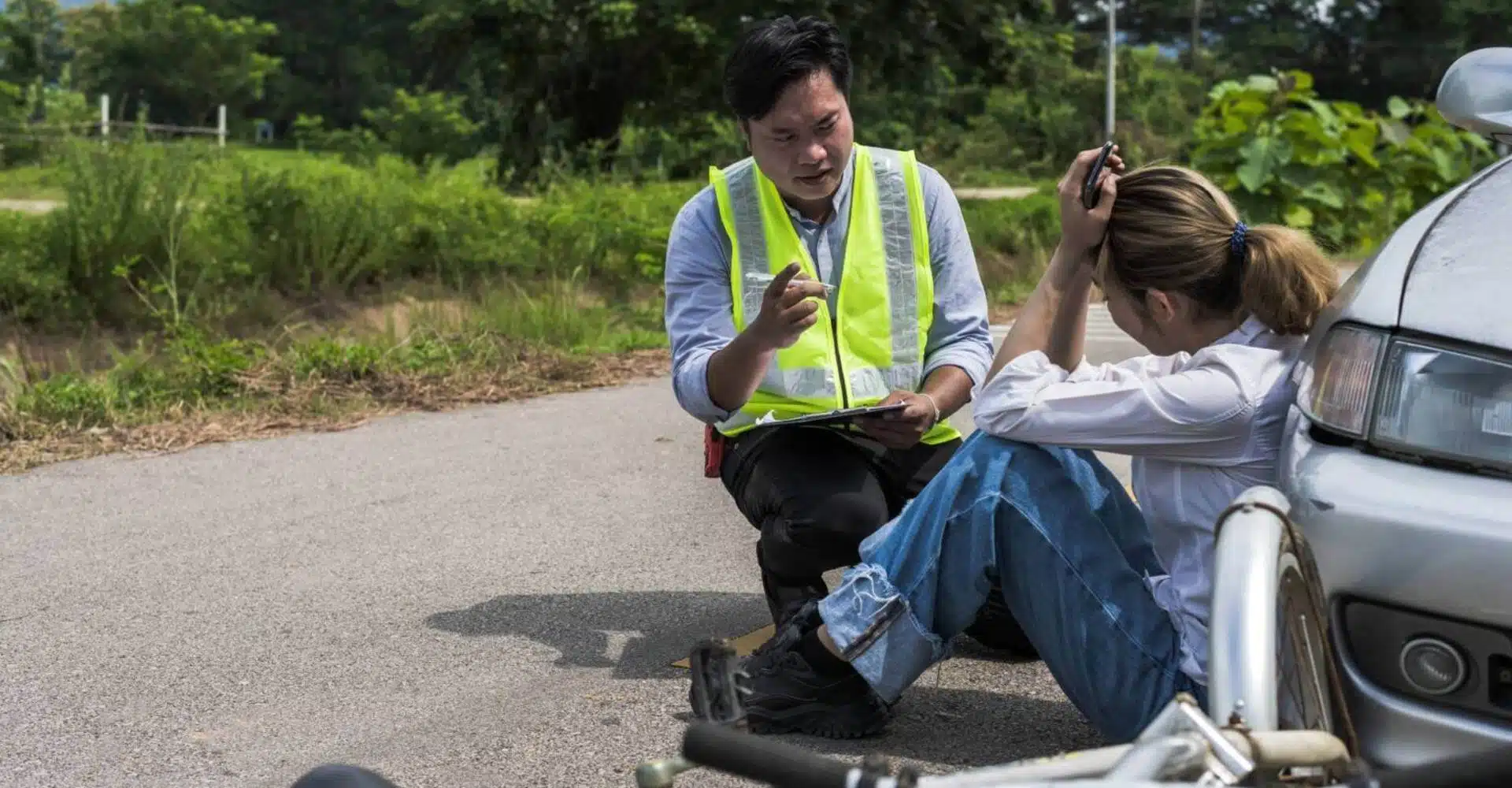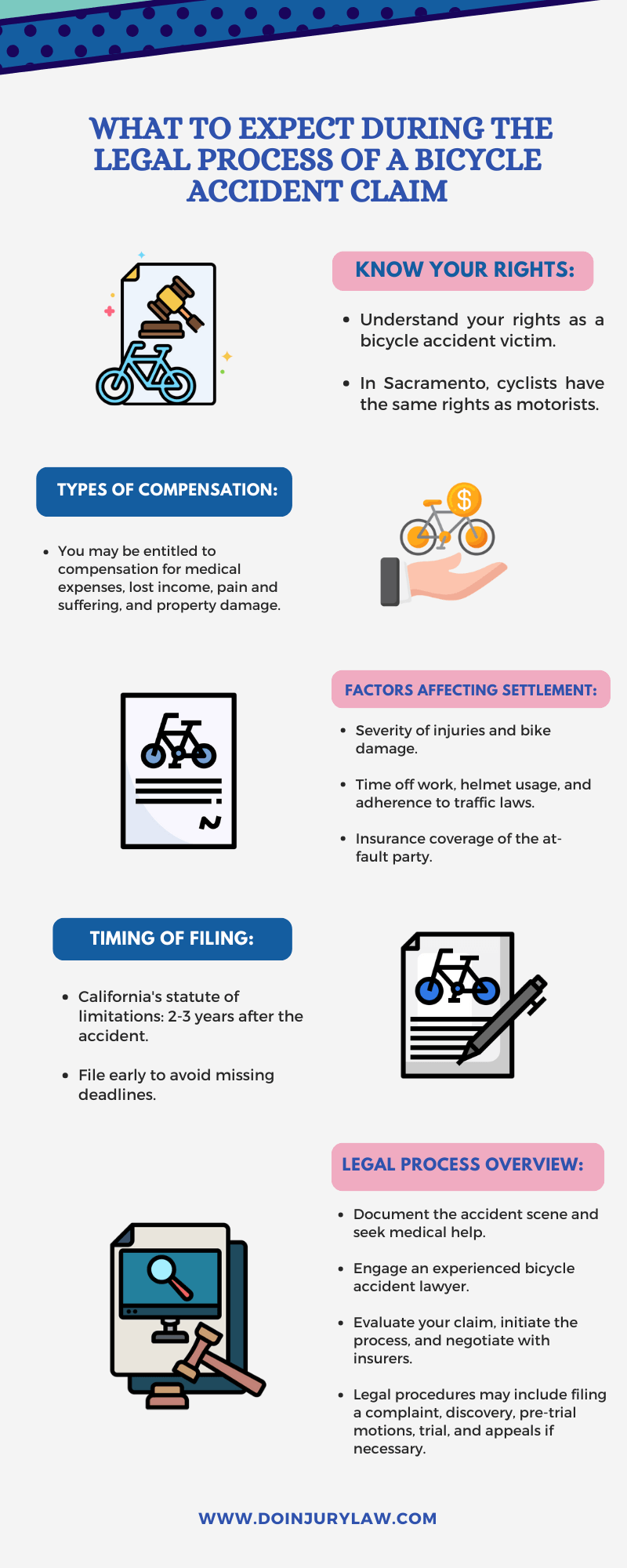What Should I Expect During the Legal Process of a Bicycle Accident Claim?
Bicycle is a prominent mode of transportation and recreation! However, despite all precautions, accidents inevitably happen, leaving you with severe injuries, expensive medical bills, and lost wages. After experiencing devastating injuries incurred from the bicycle accident, you may find it challenging to contend with the aftermath. But you don’t have to navigate the complex process of a bicycle accident claim alone.
Seeking assistance from an experienced Sacramento bicycle accident lawyer can effectively guide you on what to expect during the claim procedure. Let’s learn more about it in this comprehensive blog, outlining the appropriate steps for filing a bicycle accident lawsuit.
Understanding Your Rights
Before exploring the legal procedure, recognizing your rights as a bicycle accident victim is vital. It may also refrain you from making blunders that can hurt your cycle accident claim. In Sacramento, like in other places, bicycles are given the same rights and obligations as motorists. It implies that if you’ve been injured due to the other party’s recklessness, you can seek compensation for a bicycle accident with the help of a reliable personal injury lawyer in Sacramento.
● Type of Damages You May be Entitled To
Accidents, minor or severe, are often distressing, accompanying irrevocable repercussions. Regarding bicycle accidents, the victims are entitled to seek compensation for varied damages, encompassing the following:
- Medical expenditures consisting of hospital fees, doctor visits, and prescription medicines
- Lost income, including any time you had to take off work due to your injury
- Agony and suffering comprise physical discomfort, emotional sorrow, and loss of quality of life.
- Property damage, like the cost of repairing or replacing your bicycle
● Factors Influencing Your Bicycle Accident Settlement
When it comes to bicycle accident lawsuits, several factors might affect your claim’s outcome, contributing significantly to determining the amount of your compensation. Consider the following variables:
- Your injury’s extent and the amount of damage received by your bike
- The number of days you’re away from work owing to your accident.
- Whether or not you were wearing a helmet during the collision and adhered to the traffic regulations
- The amount of insurance coverage possessed by the at-fault party
● When to File a Claim
Every state follows the statute of limitations for filing a claim, and so is California. It stipulates a time restriction of two to three years to file your claim. Once the deadline is missed, you will no longer have the time to file a case. Although it varies from state to state, it’s prudent to file the case as soon as possible after the accident to avoid missing the time for submitting your claim, as the investigation and claim process takes a prolonged time.
Navigating the Legal Process of Statute of Limitations
● Initial Steps After the Accident
First and foremost—prioritize your safety and immediately seek medical assistance following a bicycle accident, whether minor or severe. After ensuring your well-being, adhere to the following steps:
● Document the Scene
Leverage your vital device—mobile phone—to capture the accident site, covering any damage to your bicycle, the cars involved, and your injuries. It will serve as a robust piece of evidence, helping to back up your bicycle accident settlement.
● Exchange Information
Get contact and insurance information of all persons involved, including witnesses.
● File a Police Report
Notify the police authorities and file a report outlining all the collision details. This formal documentation might be quite fruitful during the legal procedure, bolstering your case.
● Seek Medical Attention
Having a comprehensive medical examination is imperative, even if you believe your injuries aren’t grave. Since some injuries may exhibit signs later, maintaining medical evidence relating them to the event is critical to your claim.
● Document the Scene
Leverage your vital device—mobile phone—to capture the accident site, covering any damage to your bicycle, the cars involved, and your injuries. It will serve as a robust piece of evidence, helping to back up your bicycle accident settlement.
● Engaging a Legal Representative
After completing the preliminary procedures, it’s time to seek assistance from an experienced and renowned auto accident attorney in Sacramento specializing in bicycle accident lawsuits. They will be your invaluable ally in understanding the complexity of such cases. Most importantly, consider the lawyer’s experience, knowledge in personal injury law, and track of winning bicycle accident settlements when looking for an ideal attorney to entrust your case.
● Evaluation of Your Claim
Your chosen attorney will extensively examine your case to establish its strength and potential worth. This procedure includes:
● Reviewing Evidence
The attorney will examine all relevant evidence, such as medical records, police reports, witness testimonies, and any proof of damages.
● Assessing Liability
They will analyze the circumstances and applicable legislation to establish who was to blame in the accident.
● Computing Damages
Your attorney will determine the full extent of your losses, covering medical expenditures, lost income, pain and suffering, and any future costs associated with your injury.
● Initiating the Claim Process
With a comprehensive grasp of your situation, your attorney will commence the claims procedure, encompassing the following steps:
● Demand Letter
Your lawyer will prepare a demand letter demonstrating the specs of the accident, accountability, and the compensation you want. This letter is typically sent to the at-fault party’s insurance company.
● Negotiation
The insurers will analyze the demand letter and provide a settlement offer. Your attorney will negotiate on your behalf to ensure you’re fairly compensated.
● Mediation or Arbitration
If a reasonable settlement isn’t agreed upon through negotiation, other dispute resolution processes, such as mediation or arbitration, may be applied to resolve the matter outside court.
● Litigation
If all settlement attempts fail, your lawyer may advise you to file a lawsuit and take your issue to court for the judge to decide.
● The Legal Procedure
If your matter goes to court, understanding the legal process is critical:
● Filing the Complaint
Your attorney will file a formal complaint with the court, articulating the circumstances of the accident and the damages you seek.
● Discovery
The subsequent step follows the sharing of the evidence and information related to the case, such as witness testimonies, expert views, and other relevant papers by both parties.
● Pre-trial Motions
Before the trial, either party may make motions to address legal concerns or request specific actions from the court.
● Trial
The case will be heard by a judge and/or jury, who will consider the facts and arguments submitted by both parties before giving the verdict.
● Appeals
If either side is unsatisfied with the result, they can submit an appeal to have the matter reviewed by a higher court.
Final Thoughts
While navigating the legal process of a bicycle accident claim can be intimidating, the appropriate legal representation and understanding of the procedure can help you strengthen your odds of winning the case. Whether through negotiation, mediation, or litigation, an experienced attorney will diligently fight for your rights on your behalf and go the extra mile to ensure you receive reasonable compensation for your losses.


